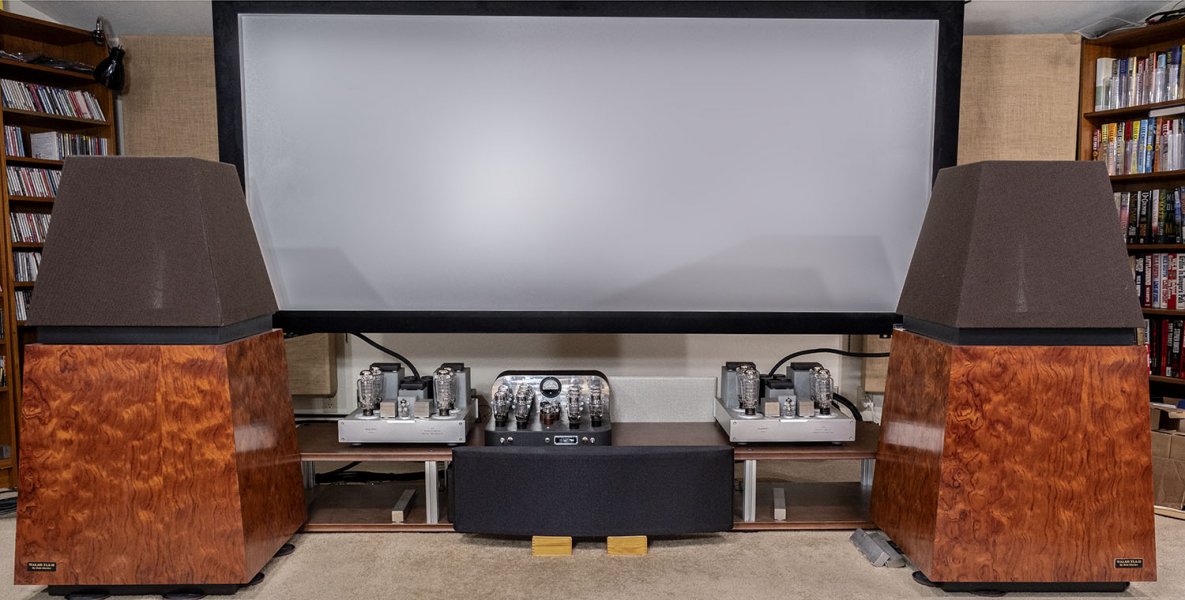IMO, you claiming that a Class D amp measures (and sounds) like a tube amp is pretty close to trolling. You may have noticed that I don’t give a crap about 90% of tube amps and 99% of other tech.
Also, if tube amps can measure so differently, and I agree with you that especially push/pull with feedback can (there are some without feedback though that sound much better in general) then which ones, exactly do your Class D amps sound like?? An OTL? Which type, circlotron? Totem pole? A triode amp? A pentode amp? According to at least one user they don’t sound like a high end SET, nor are an adequate replacement.
I've stated a good number of times (I think even on this thread) that the class D sounds a
lot like our OTLs (if casual listening at work I have to look to see which is hooked up). While it has the same liquidity and smoothness in the mids and highs, in all of our listening tests and confirmed by customer feedback, the big tell that its the class D is that nice midrange is accompanied by greater transparency. The bass is different simply because the amp behaves as a proper voltage source so deals with the high impedance peak in the bass that is common with 99% of speakers made differently. Because our OTLs have a high output impedance on account of no feedback (similar to SETs using no feedback), on speakers that work with SETs the class D will sound likely sound a bit leaner by comparison. This is the case on my CARs, but they have level controls on the back (which is common with many speakers from the Power Paradigm era, like vintage EVs, JBLs or Altecs) so I was able to correct the midrange and tweeter levels so as to restore the proper tonality.
Because of the voltage source aspect, I did not expect the class D to work so well with ESLs, but we now have reliable reports that it works fine with old Quads and also with Sound Labs. The Quad owner felt that we were displacing the M-60 as being one of the better amps for use on that speaker, but that was the point in general, although we didn't expect that particular result I'll take it.
In fact, although I have listened to class D amplifiers I enjoyed, I never found them to be a good match for beryllium tweeters
FWIW, my speakers at home employ beryllium diaphragms in the mids and highs (Classic Audio Loudspeakers T-3). I like the pure beryllium because the first breakup in the speaker is at about 35KHz, so they are very smooth and detailed.
Is that the same thing as Bob Carvers transfer function. Besides that, would make it a lateral move. To make a change would not it have to be better.
Furthermore, are you suggesting you intentionally distort your class D amp so that in sounds a tube amp?
Bob would have gained more traction at the time if he had simply pointed out that the distortion spectra of any amplifier is also its 'sonic signature';
the main difference we hear between amps (the minor difference being FR).
We are actually trying to get the distortion down as much as we can since its always barrier to transparency/detail. So zero
intentional distortion.
As I've said before (I can't speak for other designs), it worked out that the non-linearities in the amp (the encoding scheme and the deadtime in the output section; the latter of which dominates the distortion generation) tend to generate lower ordered harmonics rather than higher ordered. So it has a prominent 2nd and 3rd harmonic, its distortion spectra being somewhere between that of an SET and our OTLs in that regard (IOW, the 2nd is dominant but not as much as seen in an SET, whereas in our OTLs the 3rd dominates), but considerably lower overall; about 1/100th that of an SET and about 1/10th that of our OTLs.
Since the amp drives a much wider range of speakers than our OTLs and also since it sounds better on 99% of speakers made (and is more transparent on all of them), I don't see it as a lateral move at all. Any time you can get greater detail without sacrificing a smooth presentation its a step forward.








